The greenest edition of the Olympics shows the way, but there is much work to be done
Anticipate, Avoid, Reduce, Offset, and Mobilise. These five words sum up the spirit with which Paris 2024 is approaching the Olympic Games, scheduled from 26 July to 11 August, and the Paralympic Games, staged from 28 August to 8 September 2024. It is no longer the time to ride on the back of greatness, strength and speed because ours is the era of sustainability. That is why the French Olympic Committee has set itself the goal of organising the greenest Games ever, starting with a clear objective: drastically reducing the carbon emissions recorded at London 2012, Rio 2016 and Tokyo 2020.
Halving the previous figure of 3.5 million tonnes of CO2 will be a very difficult undertaking, although the French capital has several trump cards to play. The numbers are certainly daunting, with nearly 800 sporting events, nearly 15,000 athletes and more than 45,000 volunteers to help run the machinery of an unprecedented event. Which will attract more than 15 million visitors to the country.
Following the Paris Agreement of October 2016, the countries of the United Nations committed themselves to reducing their environmental footprint. After the Tour de France and Roland Garros, the Olympic Games are also designed to comply with the Charter of Fifteen Eco-Responsible Commitments, a document drawn up by the Ministry of Sport in collaboration with the WWF, which sets out the objectives (such as mobility and waste) that an event must meet in order to be defined as environmentally friendly. A way to combat greenwashing and marketing devoted to storytelling but with little adherence to facts.
Reduce and reuse, a glimpse into the future
The desire to break the mould with Olympic tradition is visible in the opening ceremony of the 33rd edition of the Games, which for the first time will not be held in a stadium but in the open air, with nature as the protagonist, specifically the River Seine. Leaving concrete for water is a symbolic act, an artistic and emotionally powerful way of shouting the need for a change of pace to the whole world. This step has been facilitated by the uniqueness that Paris represents in the history of the Olympics: unlike in the past, there is no new stadium to be inaugurated this time, as the French have decided to use existing facilities, choosing the Stade de France, built in Saint-Denis for the 1998 Men’s World Cup, as the main structure.
For London 2012, there were six new facilities, for Rio 2016 and Tokyo 2020 there were nine, but for Paris 2024 there will only be one arena to be christened. It is the Saint-Denis Aquatic Centre, built with recycled and biodegradable materials and powered by the energy stored by 4,680 square metres of solar panels installed on the roof. The most significant aspect is the idea behind its design, which was conceived to leave the facility as a legacy to the local community, with a centre that will add fitness, climbing and areas for individual and group sports to swimming.
Paris 2024
From an organisational point of view, since the city was assured of hosting the event, the Olympic Games have been designed to consume fewer resources, to make more and better use of those already available, and to ensure that facilities, vehicles and objects have a second life after the Games are over. The need to avoid the ‘éléphants blancs’, the cathedrals in the desert built at great expense and then abandoned because they were never converted for other uses, led the Paris authorities to make use of existing structures and to build temporary ones using materials with a low environmental impact.
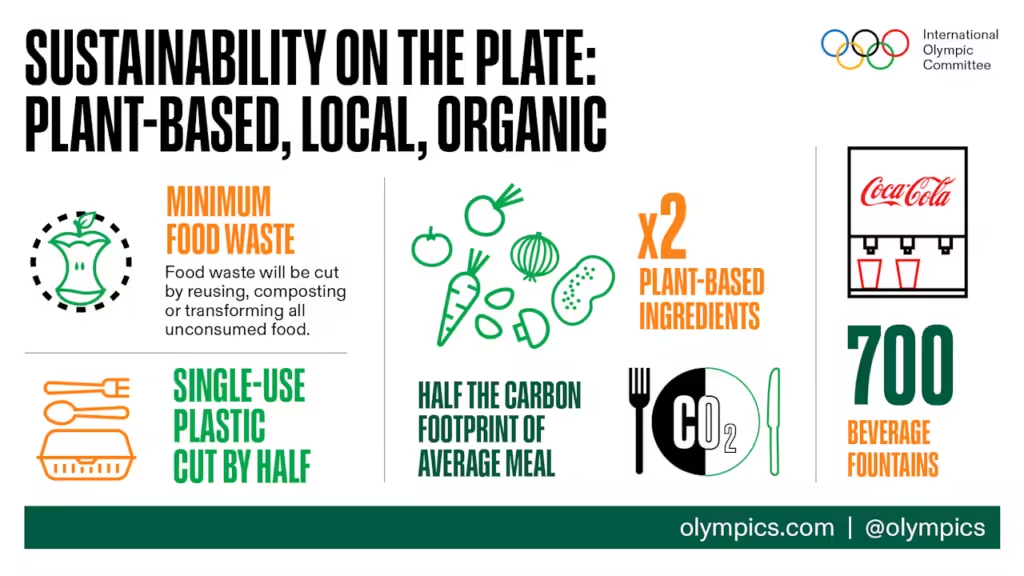
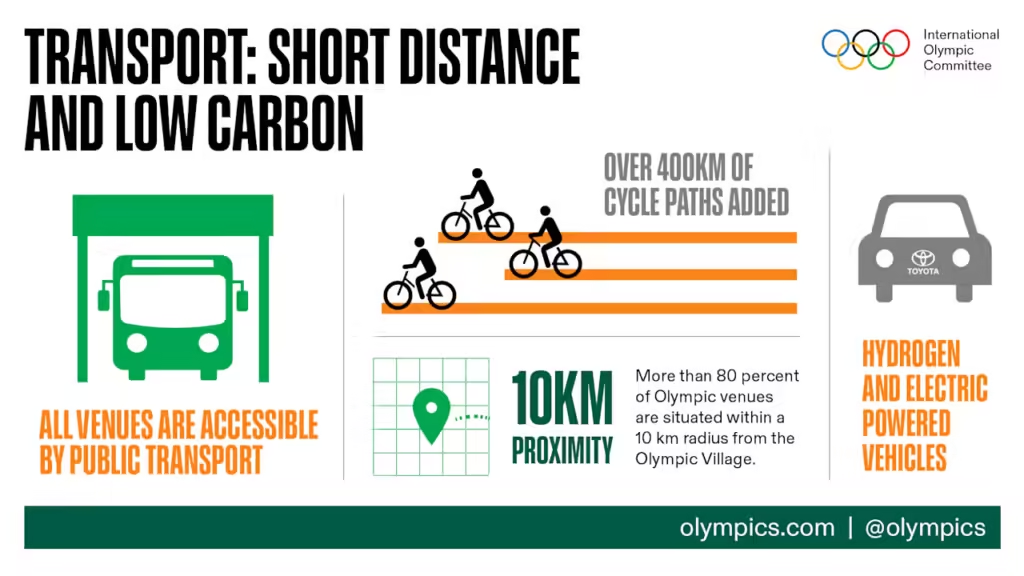
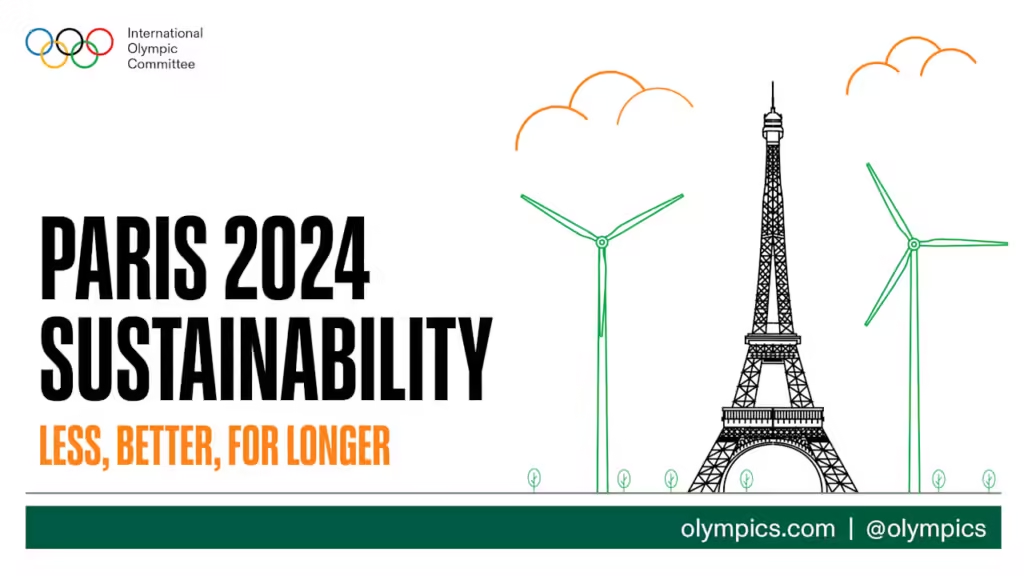

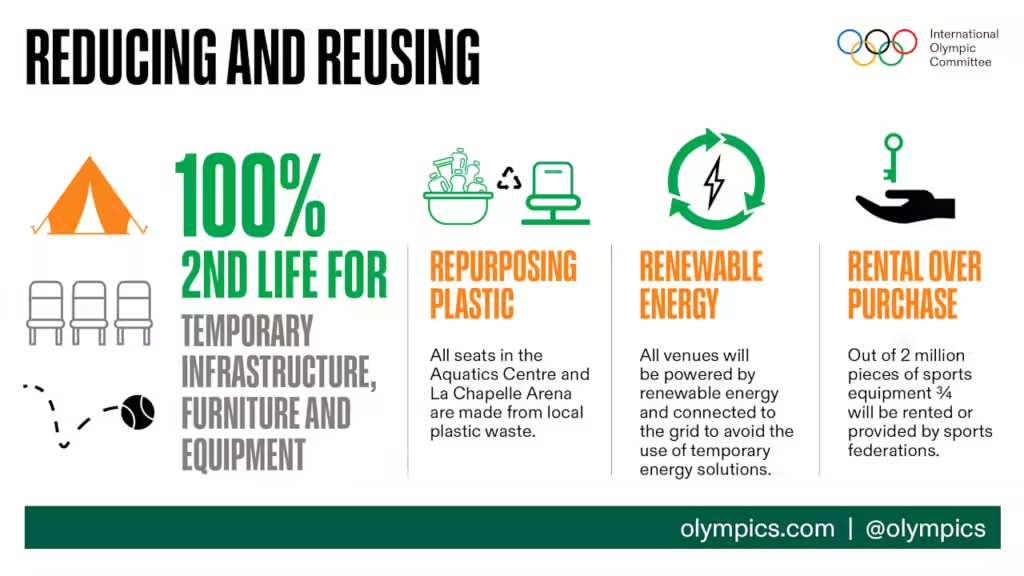
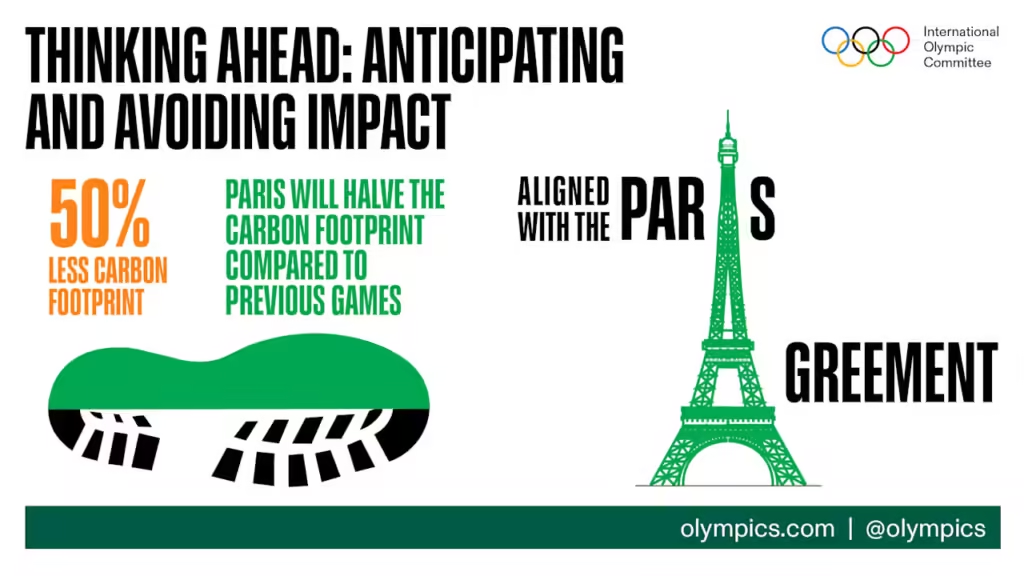
I mentioned objects because the same approach applies to computers, desks, chairs, stands, and even the mattresses on which the athletes will sleep (made from recycled fishing nets). Almost everything is rented so that it can be reused after the Games. As a result, the number of pieces of furniture needed for the event has been reduced from the original 800,000 to around 600,000. Under the leadership of Mayor Anne Hidalgo, Paris has, in recent years, embarked on a path of sustainability in many areas: more than 1,200 km of cycle paths and 300,000 trees have been planted. At the same time, diesel generators will be reduced in favour of renewable energy during the Games.
As in other editions, such as Rome in 1960, the Olympic Village will later become a residential area with housing for around 6,000 people (including affordable housing, some of it for students) and a commercial area capable of creating the same number of jobs, revitalising a district that today has an unemployment rate of over 20%.
Criticism and Limits
Sustainability is a word with many nuances and covers many areas, including food. Paris also wants to make its mark here, promising to provide vegan and vegetarian meals using fresh, seasonal produce thanks to agreements with local farms. Keeping this promise will not be easy, as more than 13 million meals will be served to athletes, and it is unlikely that those accustomed to a particular type of food or diet will give up their habits just as the most important competition of their lives is taking place.
Another extremely complex goal to achieve is the management of plastics because halving their use is a laudable goal, although so far, it has never been achieved by anyone who has flaunted it. Easier, at least on paper, might be the movement. Not only because of the abundance of cycle paths but, above all, because almost 80% of the Olympic venues are less than 10 km from the Olympic Village, reducing the athletes’ travel time and increasing the use of public transport.
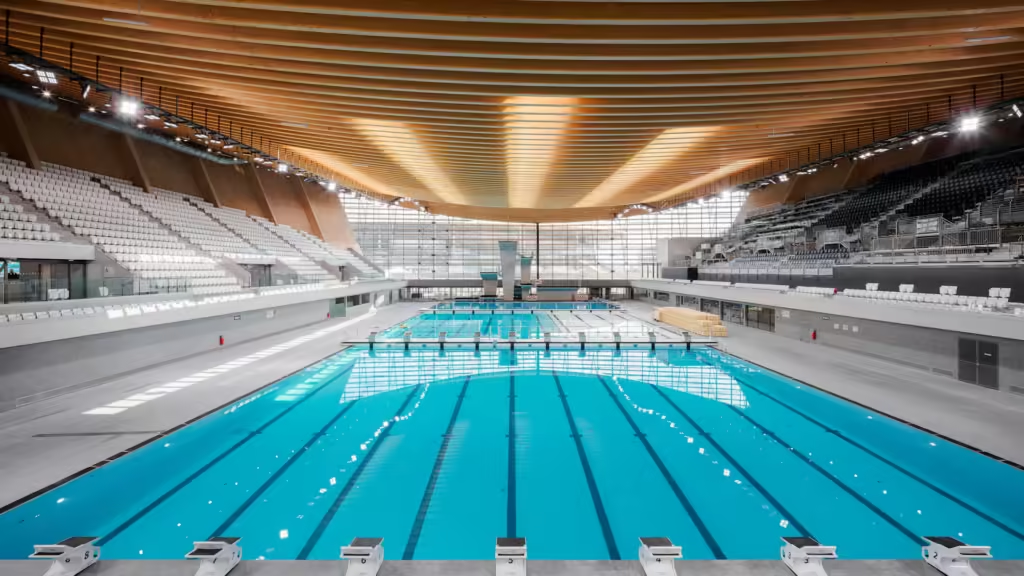
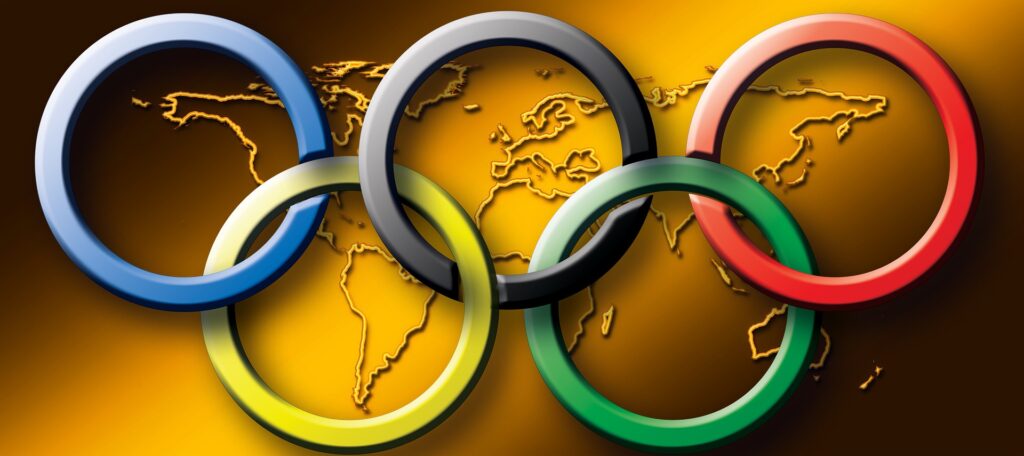
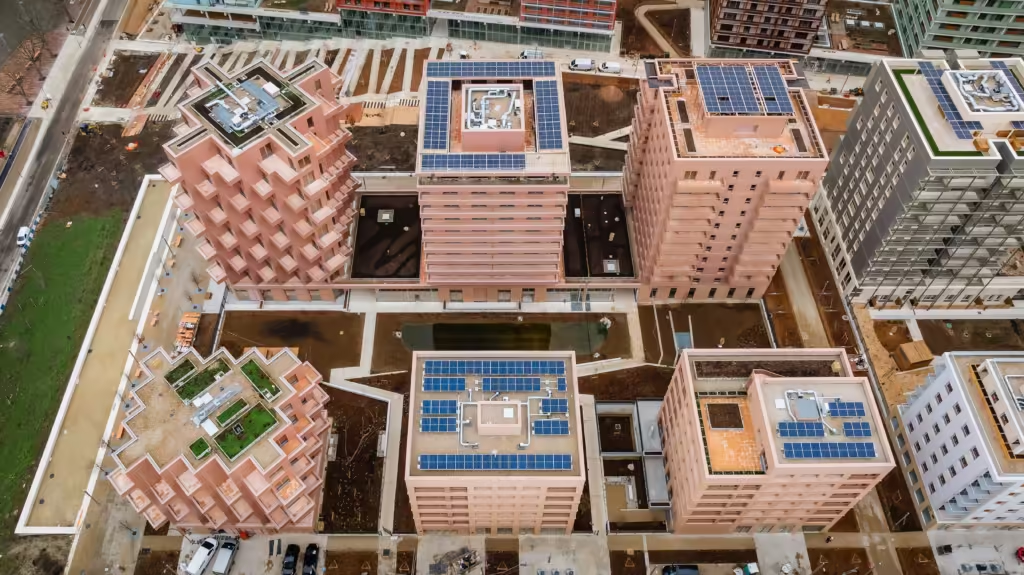

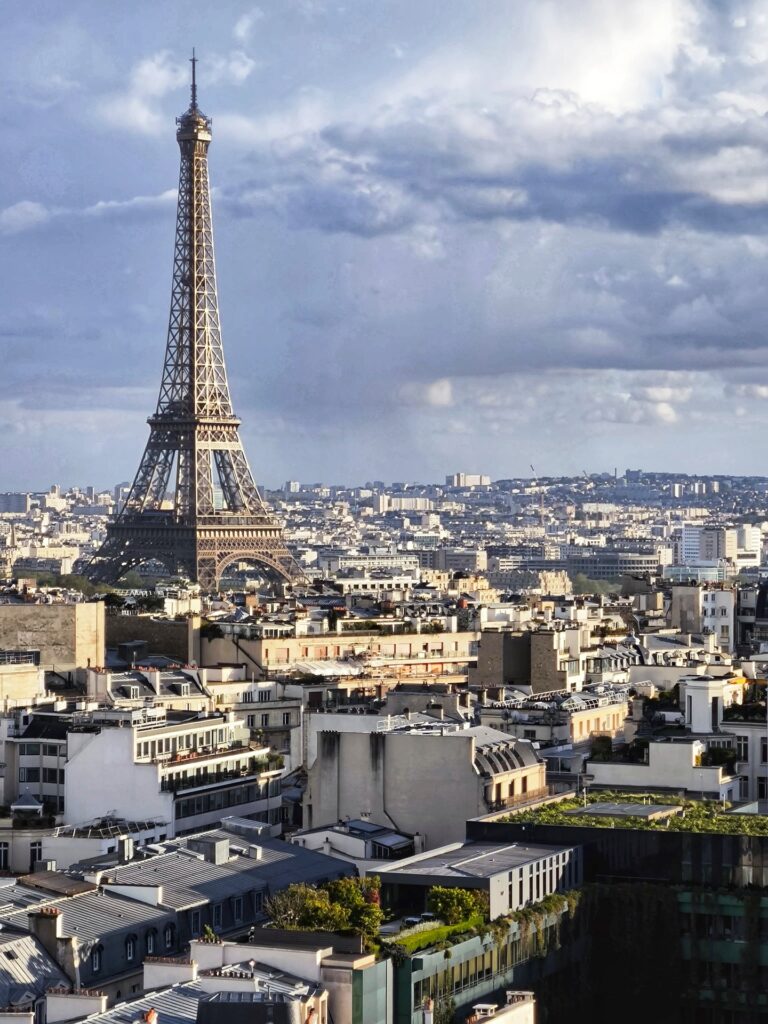
With so many positive intentions, there are still more than a few problems to be solved. Despite the authorities’ best efforts, the waters of the Seine have not reassured everyone about their cleanliness, so much so that new water treatment and drainage facilities have recently been installed. Criticism was also levelled at the athletes’ accommodation, which uses a geothermal system that is less energy-intensive than air conditioning and thus may not provide the necessary cooling against heat waves.
Beyond the promises, everything will have to be verified during the event, also aware that every time there are limitations and unexpected problems. The whole impression is that the Paris 2024 Olympics could set an important precedent to show that a different way of living, not perfect but certainly less harmful to the environment, is possible.



